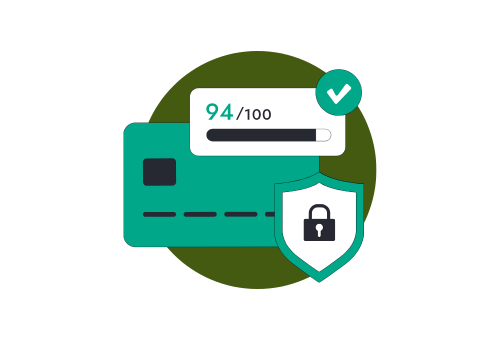Watch video summary
Schedule a Free Consultation Call Today
Discover how we can help you overcome, the latest payment challenges.
Introduction to Predictive Analytics in Payment Fraud Prevention
In today’s fast-paced digital world, payment fraud has become an increasingly pressing concern for businesses and consumers alike. As online transactions continue to grow, so does the sophistication of fraudsters who seek to exploit vulnerabilities in payment systems. Traditional methods of fraud detection, while still valuable, often struggle to keep up with the rapid evolution of cyber threats. This is where predictive analytics steps in, offering a more proactive and dynamic approach to identifying and preventing fraud. In this article, we will delve into how predictive analytics is reshaping payment fraud prevention, discuss its benefits, challenges, and explore future trends that could further enhance the security of digital transactions.
The Role of Predictive Analytics in Payment Fraud Prevention
Predictive analytics is a powerful tool in the arsenal against payment fraud, leveraging data, machine learning, and statistical algorithms to forecast potential fraudulent activities before they occur. Unlike traditional methods that primarily react to suspicious transactions, predictive analytics proactively identifies patterns and behaviors indicative of fraud, allowing businesses to take preemptive action.
Behavioral Analysis
One of the core aspects of predictive analytics is its ability to analyze user behavior. By examining historical transaction data, predictive models can establish a baseline of normal activity for each user. Deviations from this baseline, such as an unusual purchase pattern or a login attempt from an unfamiliar device, can trigger alerts for further investigation. For example, if a customer who usually makes small, frequent purchases suddenly attempts a large, high-risk transaction, the system would flag this as a potential fraud attempt.
Benefits of Predictive Analytics in Fraud Prevention
The implementation of predictive analytics in payment systems brings numerous benefits, significantly improving both security and operational efficiency.
Reduced False Positives
One of the major drawbacks of traditional fraud detection systems is the high rate of false positives—legitimate transactions that are incorrectly flagged as fraudulent. This can lead to customer frustration and even lost sales. Predictive analytics, with its ability to analyze a wider range of data points and consider context, reduces the likelihood of false positives. This ensures that genuine transactions are processed smoothly, enhancing the overall customer experience.
Improved Fraud Detection Rates
Predictive analytics not only reduces false positives but also improves the accuracy of fraud detection. By continuously learning from new data and adapting to changing patterns, predictive models become more effective over time, catching fraudulent activities that might have slipped through the cracks with traditional methods. This results in better protection for businesses and their customers.
Challenges in Implementing Predictive Analytics
While the advantages of predictive analytics are clear, implementing this technology is not without its challenges. Businesses must navigate a range of technical, operational, and ethical issues to fully realize its potential.
Data Quality and Integration
The effectiveness of predictive analytics hinges on the quality of the data it analyzes. Poor-quality data, such as incomplete or outdated information, can lead to inaccurate predictions and ineffective fraud prevention. Ensuring data quality and integrating data from various sources—such as transaction histories, customer profiles, and device information—requires significant effort and expertise. Businesses must invest in robust data management practices to maximize the effectiveness of their predictive models.

Future Trends in Predictive Analytics for Fraud Prevention
As technology continues to evolve, so too will the capabilities of predictive analytics in fraud prevention. Several emerging trends are likely to shape the future of this field.
AI and Machine Learning Integration
Artificial intelligence (AI) and machine learning are set to play an increasingly important role in predictive analytics. By enabling systems to learn from vast amounts of data and continuously improve their accuracy, AI-driven predictive models will become even more effective at detecting and preventing fraud. These technologies will also allow for greater personalization in fraud prevention, tailoring security measures to the specific behaviors and risk profiles of individual users.
Expansion to New Use Cases
While predictive analytics is currently most commonly used in payment fraud prevention, its applications are likely to expand to other areas of financial crime prevention, such as identity theft, money laundering, and insurance fraud. As predictive analytics becomes more sophisticated, businesses in a wider range of industries will be able to leverage this technology to protect themselves and their customers.
Collaboration and Data Sharing
In the fight against fraud, collaboration is key. As predictive analytics becomes more widespread, there is likely to be increased collaboration between businesses, financial institutions, and regulators. By sharing data and insights, these stakeholders can enhance the effectiveness of their predictive models and develop more comprehensive strategies for fraud prevention.
Conclusion
Predictive analytics represents a significant advancement in payment fraud prevention, offering a proactive, data-driven approach to security that is both effective and efficient. By leveraging the power of machine learning, pattern recognition, and real-time monitoring, predictive analytics allows businesses to stay one step ahead of fraudsters and protect their customers from financial harm. However, to fully realize the benefits of this technology, businesses must overcome challenges related to data quality, privacy, and technological complexity. As predictive analytics continues to evolve, it will undoubtedly play an increasingly important role in safeguarding digital transactions, making it an essential tool for any organization involved in financial services.
How Can Facilero Help You?
Understanding the Need for Reliable Payment Solutions
In today’s fast-paced digital economy, businesses require payment solutions that are not only secure but also adaptable to ever-changing market conditions. The financial landscape is evolving rapidly, and staying ahead means having the right tools in place to manage transactions efficiently and securely. This is where Facilero comes in, offering payment solutions that are designed to meet the specific needs of businesses across various industries.
Why Choose Facilero?
Facilero understands the complexities involved in managing financial transactions in a dynamic environment. Our solutions are crafted with flexibility, security, and efficiency in mind—three crucial elements that any business needs to succeed. By focusing on these core aspects, we ensure that your payment processes are not just streamlined but also robust enough to handle the challenges of a digital economy.
Secure and Compliant Payment Processing
Security is at the heart of everything we do at Facilero. In an era where cyber threats are increasingly sophisticated, it’s crucial to have a payment solution that not only processes transactions efficiently but also protects sensitive data. Our systems are compliant with the latest industry standards, ensuring that your business is safeguarded against potential risks.
Conclusion: Take the Next Step with Facilero
Don’t let outdated payment systems hold your business back. Facilero is here to help you navigate the complexities of modern payment processing with ease. Our solutions are designed to keep your business secure, compliant, and ready for future growth.
Contact us now and let us help take your business to the next level!
Get A Free Consultation
Book a free call with us to discuss how we can help you expand in new regions, scale, and get the cash flowing in your business.





